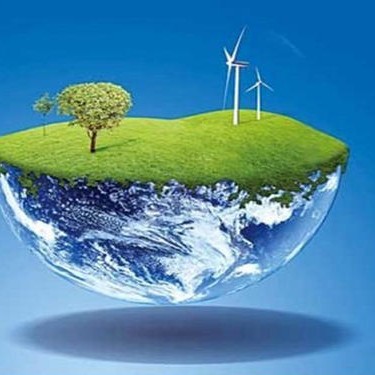
-
 Afrikaans
Afrikaans -
 Albanian
Albanian -
 Amharic
Amharic -
 Arabic
Arabic -
 Armenian
Armenian -
 Azerbaijani
Azerbaijani -
 Basque
Basque -
 Belarusian
Belarusian -
 Bengali
Bengali -
 Bosnian
Bosnian -
 Bulgarian
Bulgarian -
 Catalan
Catalan -
 Cebuano
Cebuano -
 China
China -
 China (Taiwan)
China (Taiwan) -
 Corsican
Corsican -
 Croatian
Croatian -
 Czech
Czech -
 Danish
Danish -
 Dutch
Dutch -
 English
English -
 Esperanto
Esperanto -
 Estonian
Estonian -
 Finnish
Finnish -
 French
French -
 Frisian
Frisian -
 Galician
Galician -
 Georgian
Georgian -
 German
German -
 Greek
Greek -
 Gujarati
Gujarati -
 Haitian Creole
Haitian Creole -
 hausa
hausa -
 hawaiian
hawaiian -
 Hebrew
Hebrew -
 Hindi
Hindi -
 Miao
Miao -
 Hungarian
Hungarian -
 Icelandic
Icelandic -
 igbo
igbo -
 Indonesian
Indonesian -
 irish
irish -
 Italian
Italian -
 Japanese
Japanese -
 Javanese
Javanese -
 Kannada
Kannada -
 kazakh
kazakh -
 Khmer
Khmer -
 Rwandese
Rwandese -
 Korean
Korean -
 Kurdish
Kurdish -
 Kyrgyz
Kyrgyz -
 Lao
Lao -
 Latin
Latin -
 Latvian
Latvian -
 Lithuanian
Lithuanian -
 Luxembourgish
Luxembourgish -
 Macedonian
Macedonian -
 Malgashi
Malgashi -
 Malay
Malay -
 Malayalam
Malayalam -
 Maltese
Maltese -
 Maori
Maori -
 Marathi
Marathi -
 Mongolian
Mongolian -
 Myanmar
Myanmar -
 Nepali
Nepali -
 Norwegian
Norwegian -
 Norwegian
Norwegian -
 Occitan
Occitan -
 Pashto
Pashto -
 Persian
Persian -
 Polish
Polish -
 Portuguese
Portuguese -
 Punjabi
Punjabi -
 Romanian
Romanian -
 Russian
Russian -
 Samoan
Samoan -
 Scottish Gaelic
Scottish Gaelic -
 Serbian
Serbian -
 Sesotho
Sesotho -
 Shona
Shona -
 Sindhi
Sindhi -
 Sinhala
Sinhala -
 Slovak
Slovak -
 Slovenian
Slovenian -
 Somali
Somali -
 Spanish
Spanish -
 Sundanese
Sundanese -
 Swahili
Swahili -
 Swedish
Swedish -
 Tagalog
Tagalog -
 Tajik
Tajik -
 Tamil
Tamil -
 Tatar
Tatar -
 Telugu
Telugu -
 Thai
Thai -
 Turkish
Turkish -
 Turkmen
Turkmen -
 Ukrainian
Ukrainian -
 Urdu
Urdu -
 Uighur
Uighur -
 Uzbek
Uzbek -
 Vietnamese
Vietnamese -
 Welsh
Welsh -
 Bantu
Bantu -
 Yiddish
Yiddish -
 Yoruba
Yoruba -
 Zulu
Zulu
An Overview of GRP Water Clarification Technologies and Their Benefits
Understanding GRP Clarifiers An Essential Component in Water Treatment
As the global population continues to grow and urbanize, the demand for clean water has never been more critical. Water treatment facilities face the constant challenge of ensuring that water is not only safe for consumption but also environmentally sustainable. One key technology that has gained prominence in this field is the GRP (Glass Reinforced Plastic) clarifier. This article explores the functionality, benefits, and applications of GRP clarifiers in modern water treatment processes.
What is a GRP Clarifier?
A GRP clarifier is an advanced water treatment component designed to facilitate the separation of suspended solids and impurities from water. It employs gravity to settle these particles at the bottom of a tank, resulting in clearer water that can be further treated or released back into the environment. The clarifier is constructed from glass-reinforced plastic, a material recognized for its durability, corrosion resistance, and lightweight properties.
Advantages of GRP Clarifiers
1. Corrosion Resistance One of the standout features of GRP clarifiers is their ability to resist corrosion. Traditional materials such as steel or concrete can deteriorate over time due to the chemical reactions with water and various pollutants. GRP, on the other hand, remains intact, reducing maintenance costs and increasing the lifespan of the clarifier.
2. Lightweight and Easy to Install The lightweight nature of GRP allows for easier transportation and installation. This characteristic can be particularly beneficial in remote locations where heavy machinery is not readily available. It also reduces the load on supporting structures, allowing for greater flexibility in design.
grp clarifier

3. Low Operational Costs GRP clarifiers require minimal energy to operate, primarily relying on gravity to perform their function. This translates to lower operational costs for facilities, making them an economically viable option for water treatment plants.
4. Customization GRP clarifiers can be tailored to meet specific requirements of different water treatment facilities. Engineers can design these systems to handle varying volumes of water and to incorporate additional features such as sludge collection systems or integrated control mechanisms.
Applications of GRP Clarifiers
GRP clarifiers find a diverse range of applications in various industries. In municipal water treatment plants, they are employed to ensure that drinking water meets safety standards before distribution. In industrial settings, they help in treating wastewater before it is released into the environment. Furthermore, GRP clarifiers are used in agricultural applications for managing runoff and preventing pollutants from entering water sources.
Conclusion
As the need for efficient and sustainable water treatment solutions escalates, GRP clarifiers stand out as a pivotal technology in the field. Their combination of durability, low maintenance costs, and adaptability makes them a valuable asset for both municipal and industrial water treatment facilities. By integrating GRP clarifiers into water treatment processes, we can contribute to healthier ecosystems and ensure a steady supply of clean water for future generations.
In a world where water scarcity and pollution pose significant threats, the adoption of innovative technologies like GRP clarifiers is essential. As we continue to seek sustainable solutions, it is crucial to understand the role and advantages of these systems in our collective efforts to protect our most vital resource—water.









